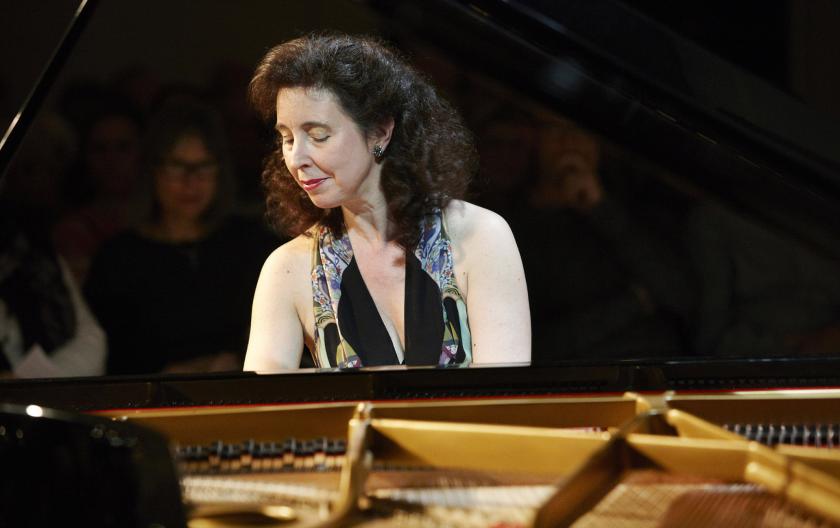This recital finds Angela Hewitt nearing the end of her “Bach Odyssey”, a project to perform all of Bach’s keyboard works, in five cities around the world, between 2016 and 2020. That’s an impressive feat, especially as she performs from memory. Here she presented the English Suites Nos. 4-6, plus an early Sonata, BWV 963.
At first glance, none of these works have immediate audience appeal. The English Suites, although mostly based on dance forms, are elaborate contrapuntal constructions, long and with little melodic character. But they proved an ideal vehicle for Hewitt’s pianism, the individual lines dancing and brimming with character under her light and graceful touch. And, although the programming was clearly determined by the need of the "complete works" project, there was plenty of variety, with Bach’s conception for each work clearly distinct, Hewitt providing a range of colours and moods from one movement to the next.
In place of the Wigmore Hall’s Steinway piano, Hewitt played her trademark Fazioli. The instrument is ideal for her touch. It has a bright, ringing quality across all registers. Under heavier hands that tone might overpower with conflicting overtones, but for Hewitt is delivers clarity and sparkling elegance. And that’s the defining quality of Hewitt’s Bach. Her sound is light, but she never gives the impression of trying to imitate a harpsichord. And her tempos are rarely fast – the slow movements often surprisingly slow – giving no hint of historically informed revisionism. Everything works on a modest scale: Movements begin clearly but not emphatically, and end with a well prepared but modest cadence. And Hewitt rarely lingers on a final chord, or makes dramatic play of the silence between movements, seemingly impatient to explore the music ahead.
Hewitt rarely lingers on a final chord, or silence between movements, impatient to explore the music ahead
The Fourth and Fifth Suites that made up the first half were both particularly light and airy. In the Allemande of the Fourth Suite, Hewitt rolled out the broken chords in the right hand, while the left delicately placed the staccato notes of the bass line, round but crisp in the Fazioli’s lower register. The Sarabande was stately, but still light, with Hewitt casually prolonging the ornaments. The Gigue movements that close each of the suites act as more elaborate finales, and in both suites Hewitt became more involved in the contrapuntal intrigues, carefully increasing the drama as the lines grew closer and the textures more dense. Spiralling sequences in the Fourth Suite Gigue and a surprisingly chromatic theme in the Fifth brought a darker and more dramatic edge, which Hewitt acknowledged, though her clarity and lightness never faltered.
The Sonata has less counterpoint and more rhetorical gestures, especially in the Recitative and Adagio movements. That required a more declamatory style from Hewitt, which she duly delivered, but this is hardly top-drawer Bach, and there was only so much she could do with it. But the Sonata’s modest scale balanced well with the concluding Sixth Suite. Everything here is on a larger scale, and Hewitt increased the textural contrasts accordingly, even if the dynamics remained moderate. The Prelude was beautifully lyrical, as was the Allemande, Hewitt here applying subtle dynamic swells to shape the long contrapuntal lines. She took the Sarabande particularly slowly, and to mesmerising effect, again skilfully drawing out the ornaments to create surface-level intrigues above the even chord voicing beneath. And the concluding Gigue raised the stakes again. Hewitt now set aside some of her reserve for a showpiece finale. But even here, the focus and control of Hewitt’s touch, and the ringing tone she draws from her piano, allowed every note of Bach’s counterpoint to shine through. Hewitt and Bach are clearly a match made in heaven.














Add comment